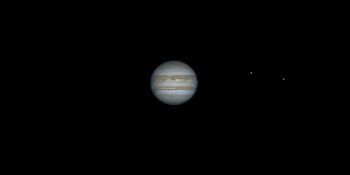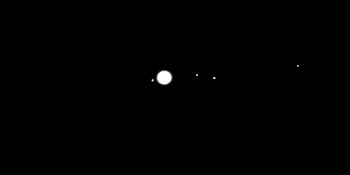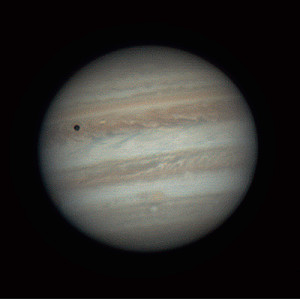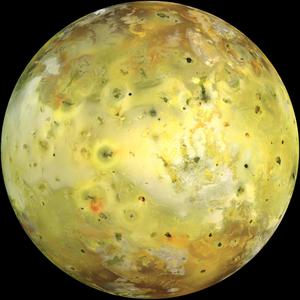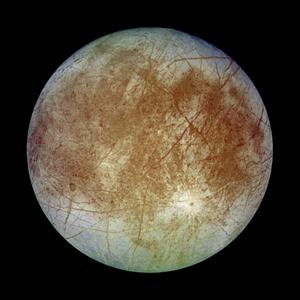Glossary term: 伽利略衛星
Description: 伽利略衛星是圍繞木星運行的四顆最大、最明亮的衛星:木衛一(Io, 艾奧)、木衛二(Europa, 歐羅巴)、木衛三(Ganymede, 加尼美得)和木衛四(Callisto, 卡利斯托)。離木星最近的是木衛一,它有數百座活火山。木衛一火山爆發的主要原因是受到木星引力潮汐效應的 "揉捏"。木衛二的整個表面都被冰覆蓋著。據信,冰層下是液態水海洋,是太陽系除地球外能夠孕育生命的最佳候選者之一。木衛三是太陽系中體積最大的衛星,也是質量最大的,是月球質量的兩倍。木衛四的大小幾乎與水星完全一致,但質量只有水星的三分之一。
這四顆伽利略衛星是伽利略-伽利萊(Galileo Galilei)於 1610 年發現的,是伽利萊使用望遠鏡進行天文觀測的開創性活動中的若干發現之一。伽利萊通過記錄發現,隨著時間的推移,四顆衛星圍繞木星運行,就像一個微型太陽系。這清楚地表明,天體可以圍繞地球以外的中心運行;這一觀測結果在科學界對太陽系的認知轉變過程中發揮了重要作用,從以地球為中心(地心說)轉為以太陽為中心(日心說)。
Related Terms:
See this term in other languages
Term and definition status: The original definition of this term in English have been approved by a research astronomer and a teacher The translation of this term and its definition is still awaiting approval
This is an automated transliteration of the simplified Chinese translation of this term
The OAE Multilingual Glossary is a project of the IAU Office of Astronomy for Education (OAE) in collaboration with the IAU Office of Astronomy Outreach (OAO). The terms and definitions were chosen, written and reviewed by a collective effort from the OAE, the OAE Centers and Nodes, the OAE National Astronomy Education Coordinators (NAECs) and other volunteers. You can find a full list of credits here. All glossary terms and their definitions are released under a Creative Commons CC BY-4.0 license and should be credited to "IAU OAE".
If you notice a factual or translation error in this glossary term or definition then please get in touch.
Related Media
木星的自轉,作者 Vishal Sharma,印度
Credit: Vishal Sharma/IAU OAE
License: CC-BY-4.0 Creative Commons 姓名標示 4.0 國際 (CC BY 4.0) icons
木衛影片2,Nicolas Hurez,Paul-Antoine Matrangolo,和Carl Pennypacker,美國
Credit: Nicolas Hurez,Paul-Antoine Matrangolo 和 Carl Pennypacker/IAU OAE
License: CC-BY-4.0 Creative Commons 姓名標示 4.0 國際 (CC BY 4.0) icons
木星、木衛一及其陰影,作者:Ralf Burkart,德國
Credit: Ralf Burkart/IAU OAE
License: CC-BY-4.0 Creative Commons 姓名標示 4.0 國際 (CC BY 4.0) icons
伊奧衛星
Credit: 美國宇航局/JPL/亞利桑那大學 credit link
License: PD Public Domain icons
